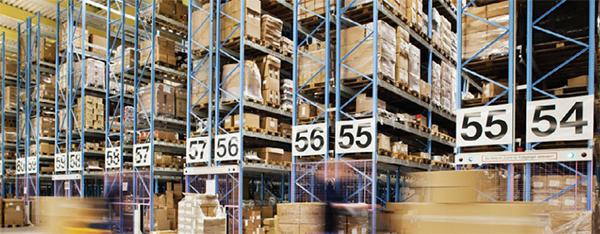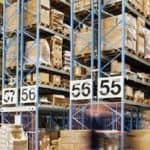Chloe Rigby discovers how Otto is using machine-learning technology to streamline its supply chain and cut delivery times
It used to take up to seven days for customers of German-based Otto , to receive the goods they ordered online. But machine-learning technology has helped the company to cut the time that its shoppers have to wait for their orders to as little as one or two days.
The retailer, which sells products from furniture and electronics through to fashion, offers about 2.2m items from 6,000 brands on its website. It’s Germany’s second-largest online retailer. Some products are sourced directly by Otto, while others come from third-party retailers. Having every item in stock is impossible, but having an item arrive at the Otto warehouse only after a customer placed an order used to mean that same customer then had to wait for up to seven days to take delivery. This, says Mathias Stüben, who heads Otto’s category processes division, was “too long: our customers wanted to have the product much faster”.
Technology from Blue Yonder now enables Otto to map future customer demand much more accurately than previously and to automate replenishment. “We have forecasts for short time periods, with products ordered automatically from our partners,” says Stüben [pictured above]. “Products go to our warehouse and then when customer demand is there, we are able to deliver to our customer in two days, normally. That’s had positive effects, from the lower rates of return that help us to cut costs, to increases in sales.
For us, it is very important that the customer is very happy, and that they get the product for a good price in a very short time.”
How it works
The Blue Yonder technology analyses around 3bn transactions, including past sales, prices and stock levels, in order to forecast customer demand and to make automated decisions about which goods to order, and in what sizes and colours. It predicts the products that will be in demand over the next two to three weeks, and orders those goods automatically. The goods are sent to Otto’s warehouse, from where they can be delivered, once ordered, to a customer within two days.
The system was first introduced at Otto in 2006. At that time, it covered the goods that the retailer itself sources directly. It also answered a need for reliable forecasting, so that Otto could deal with issues such as overstocking. Initially, it was used to forecast product sales, but has since been extended to provide dynamic pricing, and to optimise replenishment through automatic ordering. The system was recently extended to cover those products that are supplied by third-party retailers and suppliers. In future that’s likely to be extended still further.
“Now we are in the situation that we can reduce delivery times for our customers which is, I think, the main point,” says Stüben.
The system is growing fast: by the end of 2016 Otto Group, which also includes retail brands such as Bon Prix, was feeding it with more than 300m data sets a week – with around 200 factors taken into account for each item. That produces more than 5bn forecasts a year. It’s now at a scale that human decision-making could not hope to replicate, says Dunja Riehemann, director of marketing at Blue Yonder. “Machines are always better when they have millions of decisions to take on a daily basis,” she says. “Humans can no longer take operational decisions on what needs to be done daily, with all the articles, different sizes and colours that are involved. Machines can make decisions much more precisely.”
But humans, she says, still have a role to play: in setting the strategy – or “what the machine should consider in its decisions, whether that’s to maximise margins or revenue”. She continues: “These decisions are made by the company, and by humans. Machines need directions on what they should optimise, and then make those based on the company’s strategy and KPIs (key performance indicators).”
This artificial intelligence-powered machine learning means that the accuracy of forecasts will increase over time. One simple illustration of how the system uses data is through the weather. “One of the factors that the software recognises is the weather and the weather forecast,” says Frank Surholt, head of corporate PR at Otto. “The software knows it’s going to rain tomorrow in Hamburg, and calculates that a lot of people in that area will order waterproof jackets and shoes tomorrow.”
By calculating the demand, Otto also knows, says Stüben, how prominently to place the product on the website. There could, for example, be a product of the day, or a special offer for customers. “That’s important because it influences the demand for each product,” he says, “and it’s very important that Blue Yonder knows a lot of the influences that are on the product.”
Automated decision-making means overstocks have become a thing of the past. Otto considers it accurate when it sells out of items ordered from its retail partners within 30 days – using this technology that now happens 90% of the time. It now often happens that goods that are bought using automated decisions never go into storage, but are sent directly to a customer.
The system is also effective at peak times such as Black Friday. Otto now envisages a future in which predictions will get ever-more accurate. “The dream could be that we know, in co-operation with Blue Yonder, that tomorrow at 3pm in Hamburg someone will order a refrigerator from Bosch,” says Surholt. “We don’t know who will order this, but we know someone will. That means we are able to deliver this refrigerator to the local warehouse, even as we are waiting for the customer to order it. Knowing where a customer will order which product will mean we are much faster. That’s the vision for the future.”
Working with delivery systems
Otto’s use of automated decision making is supported by the way its warehousing and delivery systems are organised. One large central warehouse in Heidensleben, in the former East Germany, acts as a hub to serve smaller warehouses located around the country. From there, orders within Germany are predominantly delivered through the Otto Group’s own delivery company, Hermes. Surholt says: “It could be very much faster when very heavy products like furniture, fridges, ovens or kitchen stoves are much closer to the customer in the future, and Hermes only has to drive two or three kilometres to deliver the product.”
Stüben adds: “It is very important to think about where warehouses will be located in the future. It’s very important to have short distances between where warehouses are located and the customers.”
The retailer uses the system to inform buying decisions for Otto.de in Germany, but it also powers decisions for other Otto Group retail brands. These include discount fashion brand Bon Prix, which sells from 26 international websites, of which 22 are in the EEA, plus Switzerland. In the UK, Bon Prix offers premium delivery services including guaranteed next-day delivery for items ordered before 10.30pm, seven days a week.
Managing change In 2006, as the technology was first introduced, Stüben says that the IT project itself was not difficult. Instead, the most important challenge was to manage the change for employees as Otto asked its buyers to start to rely on the data and the technology, ahead of their own instincts. “I think the most important part of the implementation was the need to involve people from the start.
Recently, the company has worked with its suppliers to understand the idea of shipping an item before it’s clear that there is customer demand. “After a test period, our partners get positive reactions from our customers, they have more sales, Otto has more sales, so both parties are happy with the results,” says Stüben.
Professor Dr Michael Feindt, chief scientist and founder of Karlsruhe-based Blue Yonder – a former CERN scientist – argues that its technology is an important part of customer service. “Otto’s strategy shows how imperative machine learning is to improving customer satisfaction,” he said. “Everyone profits from automated replenishment processes: the customers through shorter delivery times, the suppliers through improved planning overnight as well as higher demand. Otto gains through lower warehouse and shipping costs.”
Machine learning and artificial intelligence certainly seem to be permanent fixtures at Otto Group – which is itself one of Blue Yonder’s investors. It will be interesting to see how its use of the technology expands in future. Other retailers are following suit. In the UK, for example, supermarket Morrison’s recently adopted the Blue Yonder technology to optimise replenishment and automate orders for 26,000 ambient and long-life product lines in its 491 stores. So far, it is reducing gaps on its supermarket shelves, as it automates 13m ordering decisions a day. In Morrisons’ latest full-year results, chief executive David Potts said of the new automated order system: “The system is capital light, utilising cloud technology and store-specific historic sales data to forecast stock requirements. It is reducing cost and stock levels while also saving time for colleagues and providing a better offer for customers. Availability is improving with gaps reduced by up to 30%.”






